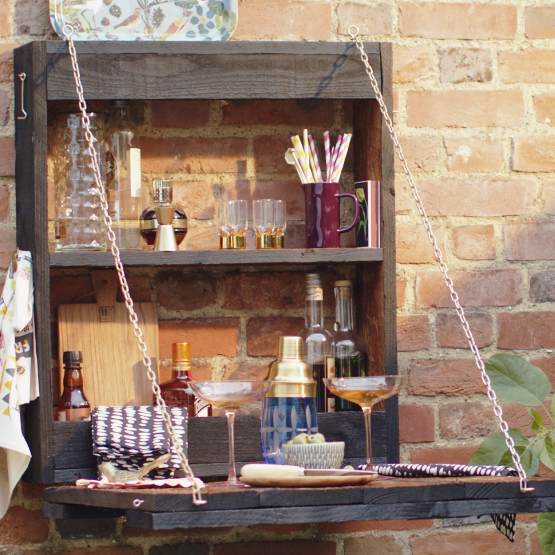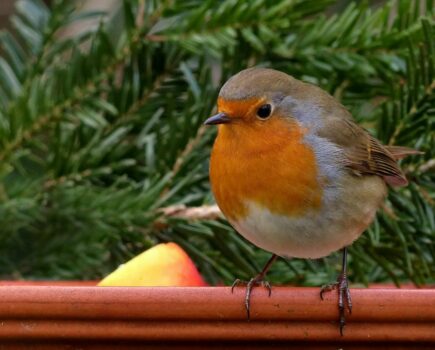Cuprinol expert landscaping and design advice on how to give your garden the ultimate spruce, ready for a summer of entertaining.
As UK restrictions are lifted, it’s our gardens that have become the safest places to socialise and entertain.
Try creating your own colourful outdoor bar and cooking area so that you don’t have to keep heading back into the house and away from the fun when the food and drinks run low.
Marianne Shillingford, creative director at wood-care brand Cuprinol says, “Throughout this latest lockdown, we’ve spent a lot of time hiding away indoors. As the weather gets better and restrictions ease, it’s time to get outside and give our outdoor spaces a much needed refresh.”
Cuprinol’s step-by-step guide to building your very own at-home bar will set you up for a summer of festivities.
You will need
5L Cuprinol Ducksback in your favourite colour
Timber (measurements below)
2-inch paint brush
45mm wood screws (a box of 50 should do)
Masking tape
Hacksaw or bolt cutter
Tape measure and pencil
Hand saw
Electric drill, with drill bits
Small exterior hinges and screws
Metal chain
Hooks and eyes

Step 1 — Measure and cut wood to size
Head to your local DIY store — it’s time for some timber. You’ll need to look for planks of treated rough-sawn timber (150mm x 22mm, total 8.5m length) and rough-sawn batten to hold the timber together (47mm x 22mm, total 2m length).
Once you’ve cut everything to size, you’ll have a little bit of each leftover — perfect fuel for the fire pit when you’re entertaining in the evenings.
Treated, rough-sawn timber cutting lengths:
90cm lengths of 150mm x 22m x6
60cm lengths 150mm x 22mm x2
55.6cm length 150mm x 22mm x3
Rough-sawn batten cutting lengths:
55.6cm lengths of 47mm x 22mm, x3
You’ll need four of the 90 centimetre lengths of 150mm x 22m treated rough-sawn planks for the door, and the other two 90 centimetre lengths will be for the vertical sides of the box.
The two lengths of 60 centimetre are to go horizontally across the door to hold it together, while the three lengths of 55.6 centimetres are for the top, bottom of the box and middle shelf.
The first two lengths of batten are for the additional casing that will face outwards from the inside of the box, positioned at the top and bottom. They’ll offer the box a bit of extra support, and make sure your bottles, glasses and shakers don’t fall off the bottom shelf when the door’s open. The final bit will be used as a bracket to fix the whole bar on the wall – we’ll come back to that in a bit.
Step 2 — Fix pieces together to form a box
Arrange the four lengths of timber you’re going to use for the box in a rectangle shape (make sure the top and bottom pieces sit in between the vertical sides, rather than on top of them) and screw them together at 90 degrees with 45 millimetre exterior wood screws — use two or three at each corner.
In the know — create some narrow pilot holes in the wood with your drill, so the screws can find some grip on their way in, and preventing the likelihood of the wood splitting.

When you’ve completed the box shape, fix the third length of 55.6 centimetre timber into the middle of the box to become a midway shelf. Then fit and fix your two lengths of batten at the top and bottom of the box as above — again, they’re in between the vertical sides of the box, just like the shelf.
Step 3 — Attach door and add hinges
For the door, lay four 90-centimetre lengths of 150mm x 22mm side by side, then fix the two 60 centimetre pieces horizontally across to hold everything together.
Make sure they’re flush with the head and base of the door, and use the same screws you used for the box. One screw per plank will do nicely, so four screws per horizontal plank.
Attach two hinges to the base of the box, line up with the door and fix. You should now have a big, sturdy box with a central shelf and a hinged door.
Step 4 — Applying Cuprinol colour
Put some masking tape over your hinges and apply a coat of Ducksback to everything else. Use a sturdy 2-inch brush to get into all the nooks and crannies, painting in the same direction as the grain for the best finish. Allow to dry, then give it a second coat.
Step 5 — Attach fixings to hold the door in place
To make sure the door stays shut, screw eyes and hooks onto the exterior of the bar as shown in the images.
In the know — Choose exterior hooks and eyes so they don’t go rusty in the rain.

Step 6 — Attach chain to door
To keep the door open at a level, 90-degree angle, you’ll need to add two supporting chains.
While waiting for your second coat of paint to dry — which can take up to an hour — use bolt cutters to chop two lengths of chain to roughly 127 centimetres each (the exact length will differ slightly depending on where you put the eyes and hooks so measure carefully before cutting).
Finish by fixing your bar securely to a wall.

Final step — Add some character
Customise your space however you see fit. You can try some weather-proof metallic lettering and decorations like in the photo, which you should be able to find at your local hardware store or garden centre.
Stock the bar with your favourite drinks, glasses and shakers — and get ready to boast about your handmade space when the guests arrive.
Subscribe to Platinum today and get every issue delivered to your door. Or find your local stockist, here. Be sure to have a look at our beauty and style archives for more inspiration.








